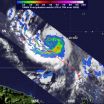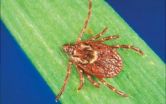(Press-News.org) Everyone knows that men and women tend to hold different views on certain things. However, new research by scientists from the University of Bristol and published in PLoS ONE indicates that this may literally be the case.
Researchers examined where men and women looked while viewing still images from films and pieces of art. They found that while women made fewer eye movements than men, those they did make were longer and to more varied locations.
These differences were largest when viewing images of people. With photos of heterosexual couples, both men and women preferred looking at the female figure rather than the male one. However, this preference was even stronger for women.
While men were only interested in the faces of the two figures, women's eyes were also drawn to the rest of the bodies - in particular that of the female figure.
Felix Mercer Moss, PhD student in the Department of Computer Science who led the study, said: "The study represents the most compelling evidence yet that, despite occupying the same world, the viewpoints of men and women can, at times, be very different.
"Our findings have important implications for both past and future eye movement research together with future technological applications."
Eye movements are a tool used to collect visual information, which then colours an individual's perception of the world. Equally, when individuals have different interpretations of the world, this in turn affects the information they seek and, consequently, the places they look.
The researchers suggest that men and women look at different things because they interpret the world differently. The pictures preferred by women were the same pictures that produced the most distinct 'looking patterns'. Similarly, the pictures with the largest scope for a difference in interpretation - those with people - also produced the largest differences between where men and women looked.
One perceptual sex difference in particular - women's increased sensitivity to threat - may explain a further finding. People's eyes are drawn to the most informative regions of an image while also being repelled from areas that carry possible threat or danger, for example the sun. Faces are a paradoxical example of a region that is both highly informative and potentially threatening, particularly if eye contact is made.
While men made direct eye contact with faces in the pictures; especially when primed to look for threat, women averted their gaze downward slightly towards the nose and mouth of these faces. The researchers claim that this may be due to women being more sensitive to the negative consequences of making direct eye contact and will, therefore, shift their gaze downward, towards the centre of the face.
###
Paper: Eye Movements to Natural Images as a Function of Sex and Personality by Felix Mercer Moss, Roland Baddeley and Nishan Canagarajah, PLoS ONE, 30 November 2012.
Men and women explore the visual world differently
2012-12-01
ELSE PRESS RELEASES FROM THIS DATE:
UI researcher predicts more intense North Atlantic tropical storms
2012-12-01
Tropical storms that make their way into the North Atlantic, and possibly strike the East Coast of the United States, likely will become more intense during the rest of this century.
That's the prediction of one University of Iowa researcher and his colleague as published in an early online release in the prestigious Journal of Climate, the official publication of the American Meteorological Society.
The study is a compilation of results from some of the best available computer models of climate, according to lead author Gabriele Villarini, assistant professor of civil ...
Native Americans and Northern Europeans more closely related than previously thought
2012-12-01
BETHESDA, MD – November 30, 2012 -- Using genetic analyses, scientists have discovered that Northern European populations—including British, Scandinavians, French, and some Eastern Europeans—descend from a mixture of two very different ancestral populations, and one of these populations is related to Native Americans. This discovery helps fill gaps in scientific understanding of both Native American and Northern European ancestry, while providing an explanation for some genetic similarities among what would otherwise seem to be very divergent groups. This research was published ...
Emerging vector-borne diseases create new public health challenges
2012-12-01
West Nile virus, Lyme disease, dengue fever, and plague are examples of "vector-borne zoonotic diseases," caused by pathogens that naturally infect wildlife and are transmitted to humans by vectors such as mosquitoes or ticks.
According to Marm Kilpatrick, who studies the ecology of infectious diseases at the University of California, Santa Cruz, a broad range of human activities can affect the spread of zoonotic diseases. In an article in the December 1 issue of the British medical journal Lancet, Kilpatrick and coauthor Sarah Randolph of the University of Oxford describe ...
Ancient microbes survive beneath the icy surface of Antarctic lake
2012-12-01
Researchers funded by the National Science Foundation (NSF) describe in a new publication a viable community of bacteria that ekes out a living in a dark, salty and subfreezing environment beneath nearly 20 meters of ice in one of Antarctica's most isolated lakes.
The finding could have implications for the discovery of life in other extreme environments, including elsewhere in the solar system.
If, as the researchers postulate, the bacteria survive purely from chemical reactions, as opposed to drawing energy from the sun or other sources, "this gives us an entirely ...
Vitamin D tied to women's cognitive performance
2012-12-01
Two new studies appearing in the Journals of Gerontology Series A: Biological Sciences and Medical Sciences show that vitamin D may be a vital component for the cognitive health of women as they age.
Higher vitamin D dietary intake is associated with a lower risk of developing Alzheimer's disease, according to research conducted by a team led by Cedric Annweiler, MD, PhD, at the Angers University Hospital in France.
Similarly, investigators led by Yelena Slinin, MD, MS, at the VA Medical Center in Minneapolis found that low vitamin D levels among older women are associated ...
Geoscientists cite 'critical need' for basic research to unleash promising energy resources
2012-12-01
Developers of renewable energy and shale gas must overcome fundamental geological and environmental challenges if these promising energy sources are to reach their full potential, according to a trio of leading geoscientists. Their findings will be presented on Dec. 4, at 5:15 p.m. (PT), at the fall meeting of the American Geophysical Union (AGU) in San Francisco in Room 102 of Moscone Center West .
"There is a critical need for scientists to address basic questions that have hindered the development of emerging energy resources, including geothermal, wind, solar and ...
NASA sees 'hot towers' in intensifying Typhoon Bopha
2012-12-01
Bopha intensified into a typhoon today, Nov. 30, as it continues to affect the islands in Micronesia in the western North Pacific Ocean. NASA's TRMM satellite captured rainfall data of Bopha and noticed "Hot Tower" thunderstorms as it was intensifying from a tropical storm into a typhoon.
When NASA and the Japanese Space Agency's Tropical Rainfall Measuring Mission (TRMM) satellite passed over Bopha twice on Nov. 29, and the later data showed that the area of heaviest rainfall had expanded and was still south of the center of circulation. The heaviest rainfall was occurring ...
Emerging vector-borne diseases create new public health challenge
2012-12-01
Human activities are advancing the spread of vector-borne, zoonotic diseases such as West Nile virus, Lyme disease and dengue fever, report scientists publishing a series of papers today in the journal The Lancet.
Vector-borne zoonotic diseases result from disease-causing agents or pathogens that naturally infect wildlife, and are transmitted to humans by carriers such as mosquitoes and ticks. In short, they're diseases transmitted between animals and humans.
Widespread land-use change, globalization of trade and travel, and social upheaval are driving the emergence ...
ORNL develops lignin-based thermoplastic conversion process
2012-12-01
Turning lignin, a plant's structural "glue" and a byproduct of the paper and pulp industry, into something considerably more valuable is driving a research effort headed by Amit Naskar of Oak Ridge National Laboratory.
In a cover article published in Green Chemistry, the research team describes a process that ultimately transforms the lignin byproduct into a thermoplastic – a polymer that becomes pliable above a specific temperature. Researchers accomplished this by reconstructing larger lignin molecules either through a chemical reaction with formaldehyde or by washing ...
Preventing 'Cyber Pearl Harbor'
2012-12-01
Cyber attacks that have long caused major work disruption and theft of private information are becoming more sophisticated with prolonged attacks perpetrated by organized groups. In September 2012, Bank of America, Citibank, the New York Stock Exchange, and other financial institutions were targets of attacks for more than five weeks. Defense Secretary Leon E. Panetta warned that the United States was facing the possibility of a "cyber-Pearl Harbor" and was increasingly vulnerable to foreign computer hackers who could disrupt the government, utility, transportation, and ...



